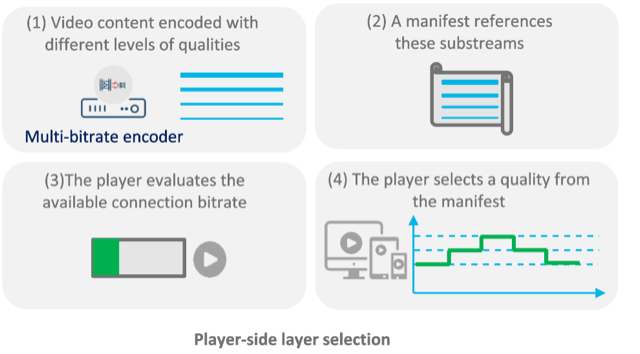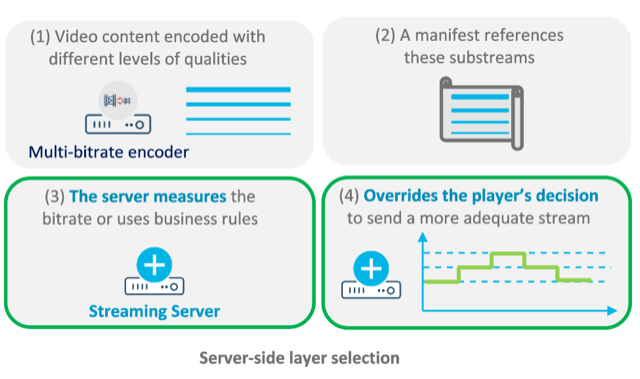QoE: An Important Key to Streaming Success
How quality of experience can help service providers achieve better control of their resources, prevent congestion and improve overall

The video streaming market continues to grow rapidly. A recent report from Allied Market Research found that the value of the global video streaming market will approach $150 billion by 2026. While the rise in video streaming represents an opportunity for revenue growth, it’s also a challenge. Today, quality of experience (QoE) is the difference between having a successful streaming business or not. Operators need more control over streaming quality and bandwidth in order to optimize network usage and deliver a fairer, more consistent QoE for all users.
The network has a critical role to play in the stream selection process and in regulating the amount of bitrate distributed to each connection individually. Ultimately, the network can help video service providers achieve control over the quality of their services and secure rational usage of their infrastructure. Performing stream selection on the server side—as opposed to the client side—is greatly beneficial in terms of delivering low-latency streaming and enabling fair distribution of the available bitrate between the devices of a same-home network. Server-side stream selection reduces transport network expenses and significantly improves QoE, ultimately impacting the loyalty of end-users.
IMPLEMENTING SERVER-SIDE STREAM SELECTION
There are two different processes that make up stream control: The first consists of measuring the bandwidth between the server and the clients for each and every connection. The second component involves selecting a video quality stream and often overriding the client’s decision. These two functions work together, as the server can use its bandwidth assessment as the main criteria for selecting the appropriate quality, replacing or complementing the ABR client’s selection.

However, the components can also be used separately. It is possible to use bandwidth measurement just for analytics or apply streams selection based on other criteria, typically using preconfigured logical rules or commands sent from the service provider’s management system. Both processes have a very limited impact on the server’s hardware resources. Therefore, no redimensioning is required to activate server-side stream selection.
Once the system has a way to seamlessly impose a different quality stream than the one requested by the client, it is possible to act on these decisions from a centralized operation point. The available bandwidth on the link is no longer the only criterion for stream selection, as it is for the traditional client-side approach. Commands can drive or influence decision-making, for instance, to impose a reduction of bitrate on all the connections of a network segment getting near saturation, possibly taking into account that some users, content or devices have to be preserved as much as possible.

Server-side stream selection is simple to implement. The technology can be implemented at one particular point of the distribution chain or at all levels, depending on the targeted use case. It is fully compliant with ABR streaming standards, including Apple HLS and MPEG-DASH, and doesn’t require any adaptation to existing ecosystems.
BENEFITS OF SERVER-SIDE STREAM SELECTION
A key advantage of using server-side stream selection for video streaming is that it enables service providers to deliver a better, more consistent QoE with fewer degradations in quality.
Server-side stream selection takes into account network conditions when determining which quality stream to deliver to each connection. This allows service providers to focus on the available resource where it matters most, leading to an improved average QoE for all viewers.
In standard ABR distribution systems, when monitoring indicates a probable video degradation, there’s little that network operators can do since they don’t manage the different end-devices streaming from their network. Placing the network bitrate distribution on the server side is an opportunity to act on the issue and resolve it before it has any significant impact on QoE. The servers on the network can dynamically measure the available bandwidth, ensuring very accurate and valuable information on the state of the network. Through advanced analytics, service providers can determine how network investments will translate into an improvement in video QoE, prevent events that can cause QoE degradation, anticipate streaming limits and manage bandwidth intelligently.
Another advantage of server-side streaming is low latency. Typically, streaming live content without adding latency requires breaking up the several-second video segments into smaller chunks. This causes issues on the players deployed today, as they rely on the existence of these segments to choose a quality stream. Server-side bandwidth measurements rely on the use of lower-layer TCP information provided by the operating system and, consequently, remain immune to that limitation.
When all video sessions cannot be served at the best available quality—for example during peak hours—the best way service providers can secure optimized overall quality is to maintain control over which sessions may be affected by this resource limitation. Server-side stream selection can gracefully and dynamically help by preserving the bitrate of higher value content such as live events, streams serving the main screen rather than mobile devices or of premium subscribers.
Through home network orchestration, server-side video streaming allows service providers to dynamically distribute bandwidth resources among different devices and monitor bandwidth at the home level. For example, let’s say a household has 10 Mbps internet access and the children are consuming 8 Mbps on their smartphones. If the parents come home and want to watch an important event on the main TV screen, then the orchestration process can reserve 4 Mbps to the main screen, ensuring a minimum QoE, while seamlessly lowering the bitrate delivered to the smartphones to a level that is still very acceptable for such screens.
CONCLUSION
One of the main reasons for ABR streaming’s success has been its adaptability to any kind of device and to different types and qualities of connections. Yet, having the client choose which resolution and bitrate to use for every video streaming session leads to a certain number of limitations on how network resources are used and how the different devices share these resources. These limitations can be alleviated with a server-side approach, such as Broadpeak’s S4Streaming solution. S4Streaming gives back control to the service provider so that they can better optimize resources and ensure that they are used wisely to deliver a fair and consistent quality of experience to all users.
Damien Sterkers is product manager for Broadpeak.
Get the TV Tech Newsletter
The professional video industry's #1 source for news, trends and product and tech information. Sign up below.
Damien Sterkers is the Video Solutions Marketing Director at Broadpeak

